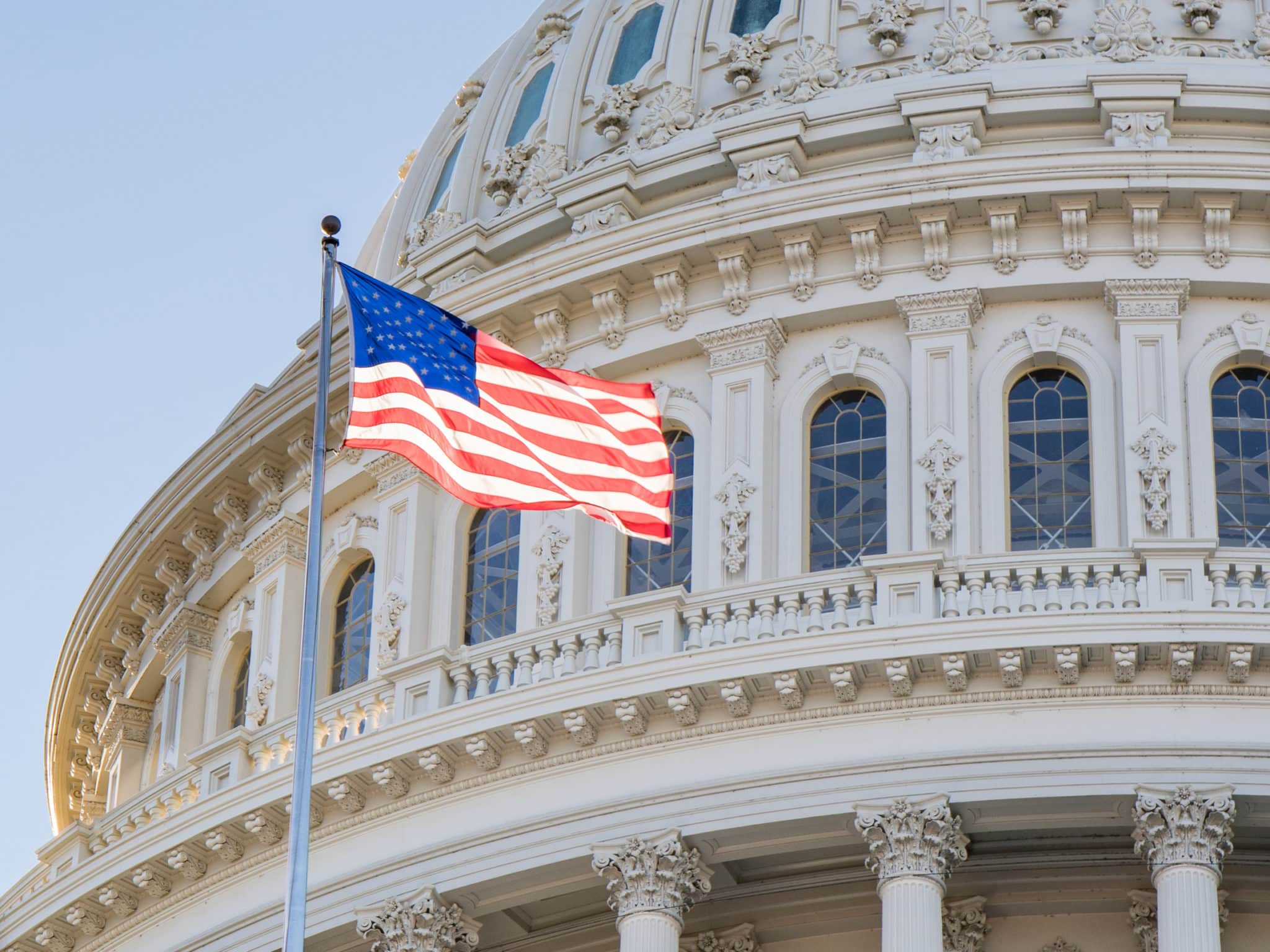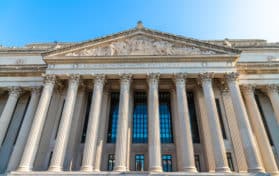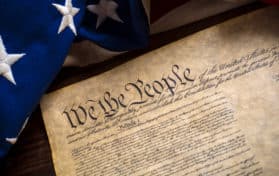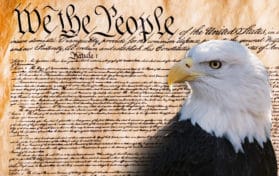
No, this is not an esoteric debate-starter for a high school civics class. It’s a question that holds actionable relevance for all Americans. The implications of this question stretch from academia to how, and by whom, laws are made. Anyone who lives under the law of the land is impacted by this question.
So, is the United States a democracy or a republic?
Yes, and no. The answer to that question is somewhat complicated. Perhaps it might be more accurate to say “the United States was intended to be a republic, but has grown into a democratic republic.” But this runs the risk of elevating original intent to divine revelation. The Founding Fathers were wise to provide guidelines and opinions, yet they could not have anticipated the complex needs of such an enormous nation.
This article is intended to help readers navigate the current debate over republican versus democratic viewpoints by defining those terms, describing the two positions, and demonstrating how support of one side or the other will have tangible impacts on the nature of equality, justice, and civil stability in the future.
While it is impossible to compose an entirely unbiased artifact, efforts have been made to ensure this article is as factual as possible, without lending strong or noticeable support to either side of the debate. Readers are encouraged to use this resource, and to find others, when considering and acting upon their own well-informed opinions.
Republic Versus Democracy: What’s the Difference?
In common parlance these two terms are often interchanged. Connotatively they can both mean a form of government with more populace-centered power, rather than a government deriving its power from a single individual such as a monarchy or dictator ship.
But the dictionary, the source of denotative or literal definitions, draws a very clear distinction between the two. And when it comes to making laws and setting policies, most nations have learned by experience that there is no substitute for precision. Here are the denotative definitions and explanations of the terms “democracy” and “republic.”
The Concept of a Democracy
Wikipedia defines democracy as “a form of government in which the people have the authority to deliberate and decide legislation, or to choose governing officials to do so..” Other dictionary sources concur with this summary, with some placing more or less emphasis on the option to choose representatives.
A less formal definition might be “each eligible person gets one vote, so the majority opinion rules.” There are no inherent checks or balances on this majority opinion, nor are there stipulations for who ought and ought not to be considered eligible to vote. The key point is that each voter gets one vote; no voter’s single opinion can out-weigh another’s. In theory, this guarantees equal power to all eligible voters.
It is worth noting that the definition of democracy has evolved over time. During the debate over the original United States Constitution most dictionaries used the Athenian definition of democracy, which did not include representative governance at all. All matters were directly decided by mass voting.
The Concept of a Republic
“A republic is a form of government in which “power is held by the people and their elected representatives”. In republics, the country is considered a “public matter”, not the private concern or property of the rulers.” Again, from Wikipedia.
At first glance there seems to be little difference between this definition and the one above. And, frankly, one would be correct. The distinction between these two forms of government has narrowed. However, it is noteworthy that the republic necessarily includes representation, whereas the democracy does not.
When one lives in a republic one will vote for a representative. The body of representatives, which is naturally smaller than that of the entire nations’ population, then meets, considers, and decides upon laws and policies. Voters choose their representatives, but do not directly decide matters of state.
Again, there are no specifications for who is eligible to vote on representation, or to be a representative. Nor are there guidelines for how many people, or what amount of territory, ought to be represented by a given number of representatives. Republican governments can sprawl over hundreds of members, or resemble an elected oligarchy (rule of the few).
Is the Government of the United States a Republic or a Democracy?
As mentioned about the Founding Fathers set out to construct a republic. The Constitution was written in support of the belief that a large population would be more easily swayed by fads and false teachers, so a selected few representatives ought to be entrusted with the responsibility to carefully consider and weigh every decision.
The Fathers had a horror of mob rule. They looked at examples from history and decided their fledgling nation would be doomed to a violent end if they didn’t create a more concise, yet still pluralistic form of government. They specifically designed a federated republic, with power centralized based on individual states’ power, not the decisions of individual citizens.
There are no provisions in the Constitution supporting ballot initiatives or referendums. However, state constitutions, which are not voted on outside each individual state, can provide for such mechanisms. Therefore, the United States is a republic constructed of many democratic republics.
While this may not have been what the Founders desired, they did respect the rights of individual states enough not to too-strictly regulate how each one might implement its own localized definitions of freedom. These freedoms may not supersede that of the federal government, but that federal government also has limits on how much influence it can wield over the states.
The Political Debate Over Democracy or Republic
It can be inferred from the fact that the two dominant political parties in the United states call themselves the Republican Party and the Democratic Party that there is significant, prolonged, historical, and heated debate over how the ever-growing government ought to evolve. Should its future include more direct populational influence, or should more power be shifted into the hands of designated representatives?
While each party has staked out values and positions on matters of consequence to American citizens, the majority of their political positions can be boiled down to who they believe ought to have more power. Should the majority be able to exert control at all times, or should every type of voice, if not every individual voice, be given equal weight?
While a purely democratic government gives each person one vote, it does mean that those who agree with more people are more likely to see their opinions put into action. This means that differing opinions can be lost in the crowd due to the sheer volume of those echoing in agreement.
However, if each type of voice is given equal weight, it is possible that policies may be enacted that only benefit a few individuals instead of the larger population. When one person, or state, has the same political clout as ten persons or states, that one might successfully silence the ten, thus benefitting only itself. There are pitfalls and inequalities on both sides of this debate.
It is also interesting to note that both parties’ opinions on republican versus democratic government change depending on whether the state or federal government is being considered. This, too, speaks to the values that each party emphasizes, and is thus all the more important to examine and understand.
Here is a brief summary of the state and federal positions of each party regarding republican versus democratic government
The Point of View From the Right: Republican:
The Republican party, or the Right as they are often called, prefers a republican form of government at the federal level, and direct democracy at the state level. While this may seem contradictory, it actually describes a group of people who emphasize individual freedom and individuality itself over equality of all.
To the Republican party the heterogenous nature of the United States is one of its great strengths and ought to be protected. A handful of political powers should be controlled by duly elected representatives, and the remainder of the power be spread out across the states in order to mee t their unique needs.
But within each state a representational democracy, placing greater power in localized cities, counties, and individual citizens better distributes power in ways that benefit each unique municipality.
The Point of View from the Left: Democrat
The Democratic Party advocates for the exact opposite arrangement. They would rather see federal issues put up for vote at the national level, and localized issues controlled by elected representatives. Their goal is a homogenous distribution of laws that ensures each person has access to the exact same resources as everyone else.
By putting federal issues before the entire population the Democratic Party believes they can achieve a balanced outcome that offers everyone a fair chance at the same opportunities. No privileged few makes the decisions for the majority,; every voice can be heard.
Yet knowing that old adage of birds of a feather flocking together, the Left sees power at the state and local levels as threats to this smooth continuity. By promoting representational government they strive to unify the outcomes of the states with each other so that pockets of privilege don’t disrupt the equal flow of power.
How the United States is Governed
Most democratic countries feature a multi-branched system of government. The United States has three branches: executive, legislative, and judicial. How they work, and how members of each are chosen are described in the United States Constitution. This is the hallmark of a constitutional government.
Executive Branch
The executive branch makes formal declarations of war and peace, approves or veto’s decisions made by the legislature, and is responsible for appointing members of the judicial branch. The executive branch is headed by an individual known as the President, who is then aided by a vice-president and a number of agency directors responsible for administrating the various policies put in place by three branches.
Legislative Branch
The United States Legislature is bicameral; it is comprised of a House of Representatives elected by popular vote, and a Senate composed of two senators from each state. These two houses draft and approve legislation, confirm or reject presidential nominees, and prosecute improper behavior by the president. They are tasked with the national budget, and ratifying new states’ admission into the Union.
Judicial Branch
The judicial branch’s primary, and sole, responsibility is to interpret the Constitution as it applies to new and existing laws. While this may seem like a lot less power than the other two branches, the Supreme Court, the embodiment of the judicial branch, can invalidate any action taken by either or both branches simply by ruling it unconstitutional, that is, prohibited in the body of text that gives form to the national government.
State and Local Governments
There is some variance between state governments, and even more between local (city or county) governments. For example, two states aren’t technically states – they’re commonwealths. However, all 50 states (even the commonwealths) have iterations of the three-branch and bicameral systems of government, emulating the federal government.
Local governments vary widely depending on number and type of population, and population density. Cities are often governed by even smaller iterations of the three-branch system, with councils taking the place of full bicameral legislatures. County governments follow whatever guidelines are set up in that particular state’s constitution.
Key Takeaways
The United States is a democratic republic, or a representational democracy, depending on if one takes a state-upward or a federal-downward view of things. Popular government runs the risk of mob rule and losing the individuality of its constituents while the republican form can take on the specter of elitism and rule by the few.
The Left fears elitism more than they fear mob rule, and the Right takes the opposite view. Or, put in more positive terms, the Left values giving each individual equal chances and resources while the Right celebrates uniqueness and individualistic needs and abilities. Thus they differ on whether the federal government ought to be more representational, and whether or not to promote popular government at the state level.
Both republican and democratic views and forms of government have great value and the potential to preserve aspects of the American government that have sustained it throughout its short history. While the America of today grew out of the past America, it is important to recognize how it has evolved and differentiated itself from the singular vision set forth by its founders. Today is the next step toward tomorrow, and if America is not only to survive but flourish it is vital that citizens take time to study and internalize these important concepts, making decisions relevant to their needs and those of their community.





